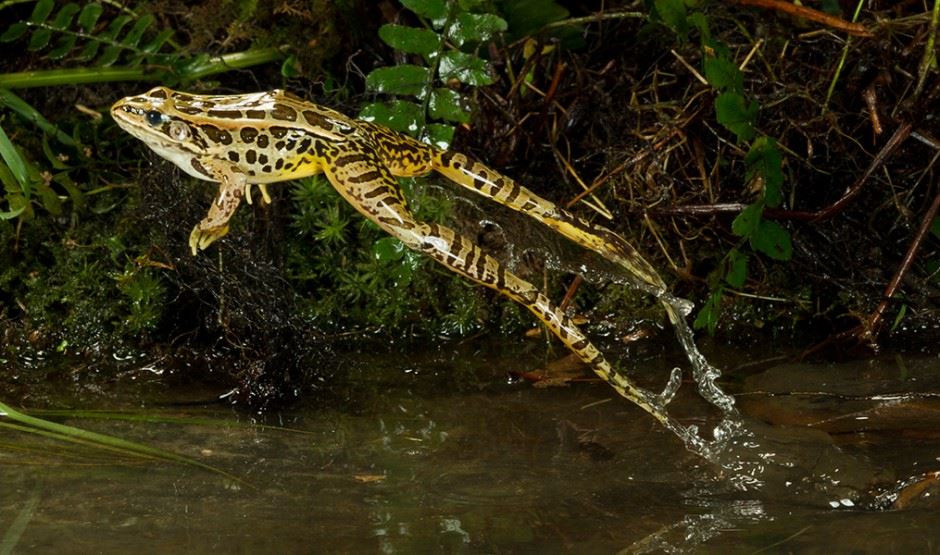- HOME
- Wildlife We Love
- Calling All Critters
- Pickerel Frog

Pickerel Frog
*Please note that clicking a link below will take you to a different website. To return to this page, simply close the new tab or window that opens. The pickerel frog (Rana palustris) [2][3][4] is a small North American frog, characterized by the appearance of seemingly “hand-drawn” squares on its dorsal surface. Distinguishing FeaturesThe distinctive rectangular spots of the pickerel frog may blend together to form a long rectangle along the back. All leopard frogs have circular spots. In addition, pickerel frogs have prominent dorsolateral ridges that are unbroken. Another important distinguishing mark is the orange or yellow flash pattern found on the inner surface of the hind legs of pickerel frogs. The frog must be picked up to examine this, as the legs cover the coloration otherwise. The plains leopard frog (Lithobates blairi) exhibits this coloration as well, but the dorsolateral ridges are interrupted and inset medially in that species.RangeThe pickerel frog ranges in the west from much of Wisconsin, southeast Minnesota, eastern Iowa, through Missouri and down to eastern Texas. To the east they extend through northern Louisiana, most of Mississippi, northern Alabama, Georgia, and South Carolina to the coast. Their northern range extends into Canada in the southern reaches of Ontario, Quebec, New Brunswick, and Nova Scotia. The range is spotty through the midwestern states and a field guide should be obtained for the specifics on ranges in a particular area.OtherThe skin secretions of a stressed pickerel frog are known to be toxic to other frogs, as many a novice frog catcher has found when he finds only the pickerel frog still alive in his bucket. These secretions can also be moderately irritating if they come in contact with the eyes, mucous membranes, or broken skin.From Wikipedia, the free encyclopedia Cape Ann Vernal Pool Team * P.O. Box 39 * Gloucester, MA 01931 |
Powered by Wild Apricot Membership Software
